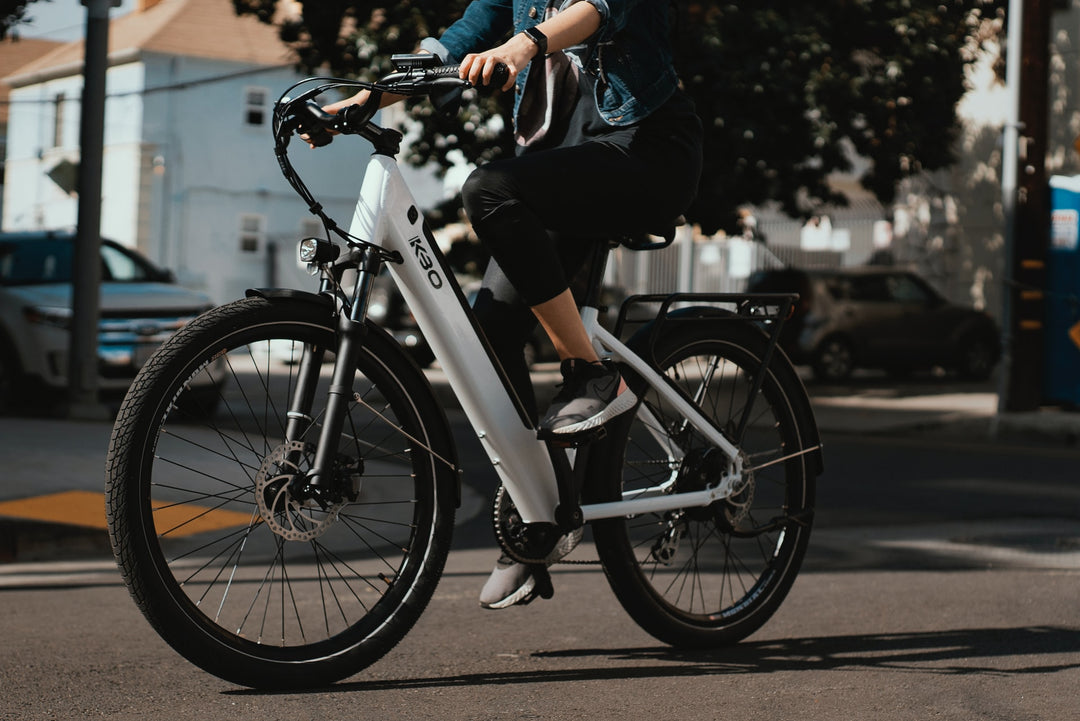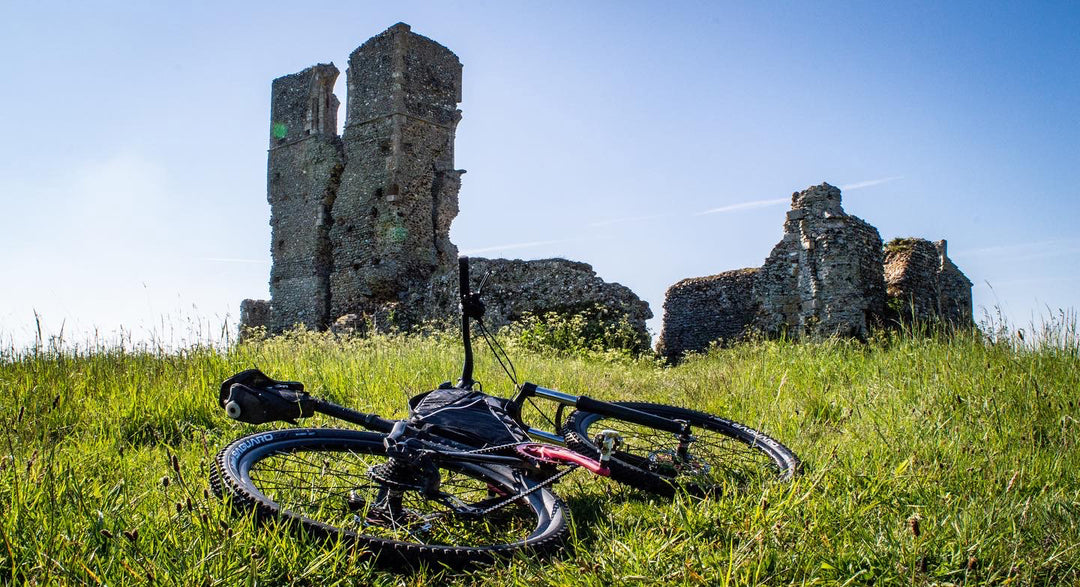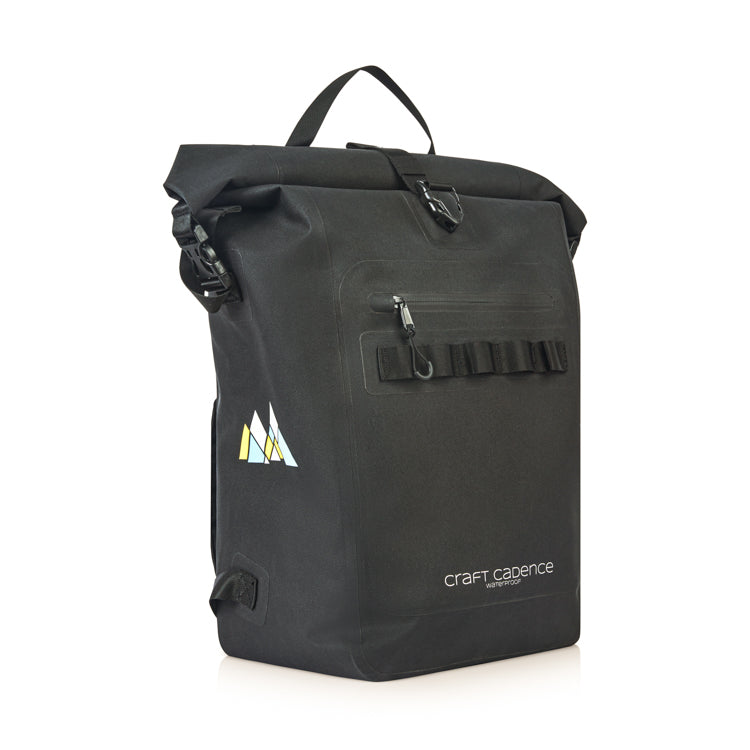The definitive guide to top tube bags for cycling
Craft Cadence is a UK based cycling bags and pollution masks brand that helps commuters stay organised and breath clean air. This is part of series of blog posts covering a cycle commuter's essential gear and equipment.
Cycling luggage comes in many forms - some choose panniers, some choose backpacks, some simply use their cycling jersey pockets. But when you’re travelling light or simply need quick access to essentials, it’s hard to beat the top tube bag.
Yes, jersey pockets are great, but they can be a nightmare to safely get stuff out of and can be uncomfortable if packed. And panniers and backpacks are weighty, hard to access unless you stop and pull over, and can impact the comfort of your cycling experience.
What are top tube bags?
Top tube bags are great for long and short rides, as well as touring. Fondly named ‘bento boxes’ by road cyclists and triathletes, they provide a great place to store snacks, inner tubes and other goodies you want easy access to.
They can additionally be a safe place to stash your phone, or use it for navigation, as well as bank cards and keys - the essentials.
Top tube bags sit on top of the upper frame, rather than hang below it. Most top tube bags are attached to the top tube and stem via velcro straps. Some have specialist fittings and mounts so you don’t need to worry with straps but staps provide greater versatility.
Straps work with road bikes, mountain bikes, commuter bikes and more, but always check the frame of your bike before buying a top tube to make sure it’s compatible.
The limited space available means you’ll never be able to carry the same amount of items as a backpack or pannier, but they are a lot handier for gels and fuel on the go. Triathletes, bikepackers, commuters and casual cyclists have been using top tube bags for years.
Here, we’ll take a look at the types of top tube bags available, the pros and cons of each, as well as what makes a good top tube.
The types of top tube bags
For navigational purposes:

These top tube bags are typically designed for functional use. They are normally cheaper and are usually wider than most other top tubes in order to fit a mobile phone in. They, therefore, aren’t suitable for performance but enable you to use your phone for navigation. Your phone is protected by a waterproof cover, but these bags are limited in space for anything else - small accessories only.
The pros and cons:
- Easy to see the phone screen
- Plenty of cheap options available
- Poor storage space
- Wide design to accommodate phone can be ungainly
For commuting or bikepacking:
Top tube bags for commuting or bikepacking generally have a greater capacity to fit more in them, as well as more options for fixing. There is also a lot more variety in design, depending on the length and nature of your cycle trip, but they don’t usually come with a phone mount. A top tube bag is a great addition to commuters or bikepackers as it provides accessible storage for snacks, electronics, and repair kits. Given their use, these bags should guarantee waterproofing and be easy to access.
The pros and cons:
- Unlikely to have a phone mount
- Greater capacity for essentials
- More flexibility in shape and design
- Variety of fixing options to improve sturdiness
For performance use:
Triathletes and performance riders use a more aerodynamically designed top tube bag, which usually has zippers that go through the middle of the bag. This provides easy access to gels and fuel on the go. As they are designed for performance, these top tube bags tend to be thinner to avoid any rubbing against your knees. They are also lighter, but capacity is reduced because of the width.
The pros and cons:
- Aerodynamic design
- Perfect for snacks and gels on the go
- Capacity typically small due to narrow width
- Ease of access with middle zipper
What makes a great top tube bag
As mentioned above, a lot depends on what you want to use the top tube bag for. Is it for racing, or is it for commuting, for instance? However, in general terms, top tube bags come in a wide range of sizes and fittings to cater for all. The best are typically small enough to not get in the way of your knees while you pedal, but big enough to carry everything you need, while easy to access.
Additionally, when thinking about buying a top tube bag, you want a bag that is durable and performs well over time, as well as waterproof to protect your valuables. You want to avoid zippers that could break, especially as zippers are only water-resistant rather than guarantee waterproofing. Additionally, a zipper can be fiddly when trying to access the contents of the bag, so a lot of leading bags come with a flap that can be opened with one hand. Lastly, if you care about aesthetics, you also want your bag to match your bike!
You should always think about what bag works for you. Factor in the size of the bag, the width, the length, the capacity (1L is around average), the weight, the fittings and so on. The larger the bag, the less stable it is. When looking at the fitting of the top tube bag, you want to check the fastening points. If there is any doubt, a bag with some flexibility is probably your best option, although may be less stable.
Conclusion
So, if you want to travel light, want to compliment your existing cycling storage, or simply want to access your snacks and valuables quicker, a top tube bag is a great option. Some top tube bags have actually become a replacement for clunkier panniers, especially if they are aerodynamic.
Do you use a top tube? Let us know what you love, or hate, about them.



